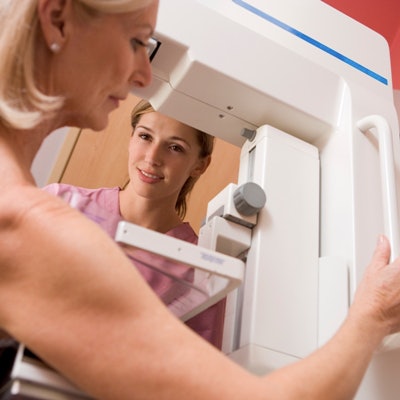
A second opinion review of breast images from other institutions leads to a change in interpretation -- and potentially disease management decisions -- in almost 30% of patients, according to a study published online March 16 in the American Journal of Roentgenology.
The findings address the question of whether second opinion reviews are worthwhile, even though the process can be time-consuming and labor-intensive, wrote a group led by Dr. Kristen Coffey from Memorial Sloan Kettering Cancer Center in New York City.
"Second opinion review at our institution involves coordination of multiple steps, beginning with the patient's retrieving and submitting imaging studies and pathology reports from the outside institution to a surgical nurse coordinator and radiology clerk," the researchers wrote. Then "the radiologist reviewing the case must organize the studies for interpretation, correlate the findings with any available pathologic results, consult with the referring breast surgeon, and issue a formal radiology report."
Worth it anyway?
So why do radiologists at specialized cancer centers reinterpret breast imaging exams from other institutions anyway? One reason is that patients with suspicious findings on breast imaging performed at a community center are often referred to cancer center physicians for consultation -- or they seek a second opinion themselves.
"At our cancer center, specialized breast radiologists offer a consultation service to new patients of breast surgeons at the center by providing second opinion review of all imaging studies obtained at outside facilities, because clinically significant changes in radiologic interpretation are believed to influence surgical management," Coffey and colleagues wrote.
The researchers sought to evaluate overall agreement between their second opinion review and the initial report of outside studies, as well as assess how reinterpretation of outside studies affected clinical management.
They included breast imaging studies of 200 patients who underwent 184 mammography, 149 ultrasound, and 63 MRI exams at community facilities; the patients then submitted the images for second opinions to Memorial Sloan Kettering between January and April 2014. Any reviews that led to the recommendation and performance of new biopsies were further categorized as benign, high-risk, and malignant based on histopathologic findings.
Among the 200 patients, the outside radiology report and second opinion review showed disagreement for 55 (28%), the researchers found, with the second opinion leading to a major change in management for 26 patients (13%). Based on the review, 20 new biopsies were performed, which yielded 10 malignancies and four high-risk lesions; two of the patients with high-risk lesions did not have a current breast cancer diagnosis at the time of the second opinion review.
The surgical plan was changed to mastectomy for six of 10 patients due to the identification of new sites of biopsy-proven malignancy. On the preventative side, eight biopsies were averted based on interpretation of benign findings, and all of these patients had stable clinical follow-up at one year.
Expert advice
Suspicious findings at breast imaging are often initially identified by community radiologists, who have varying degrees of experience, Coffey and colleagues wrote. Studies have shown that breast imaging specialists have higher cancer detection rates than general radiologists -- a finding confirmed by this research.
"Our research revealed disagreement between the outside radiology report and second opinion review in 28% of breast imaging studies submitted to our cancer center," the authors wrote. "Our findings support the assertion that there is a variance in radiologic impression between general and subspecialty-trained radiologists."
Although the study does have limitations -- including its small sample size and short study period -- the results suggest that reinterpretation of outside studies is worthwhile, the group concluded.
"Reinterpretation of imaging studies by a specialized breast radiologist has the potential to reveal new cancers and to reduce the number of unnecessary interventions, such as biopsy, which might otherwise lead to patient anxiety and psychologic distress," the authors wrote.



















